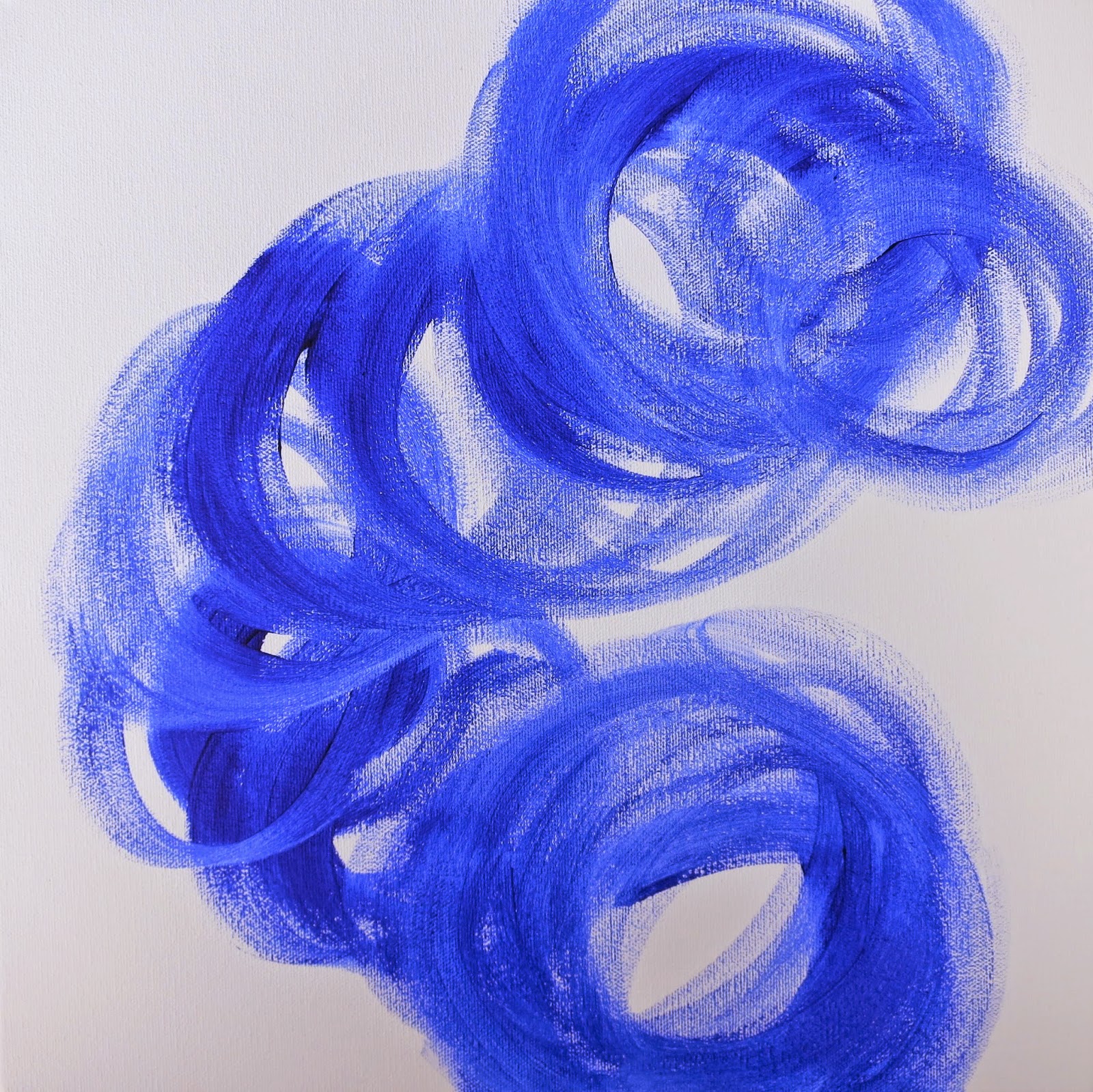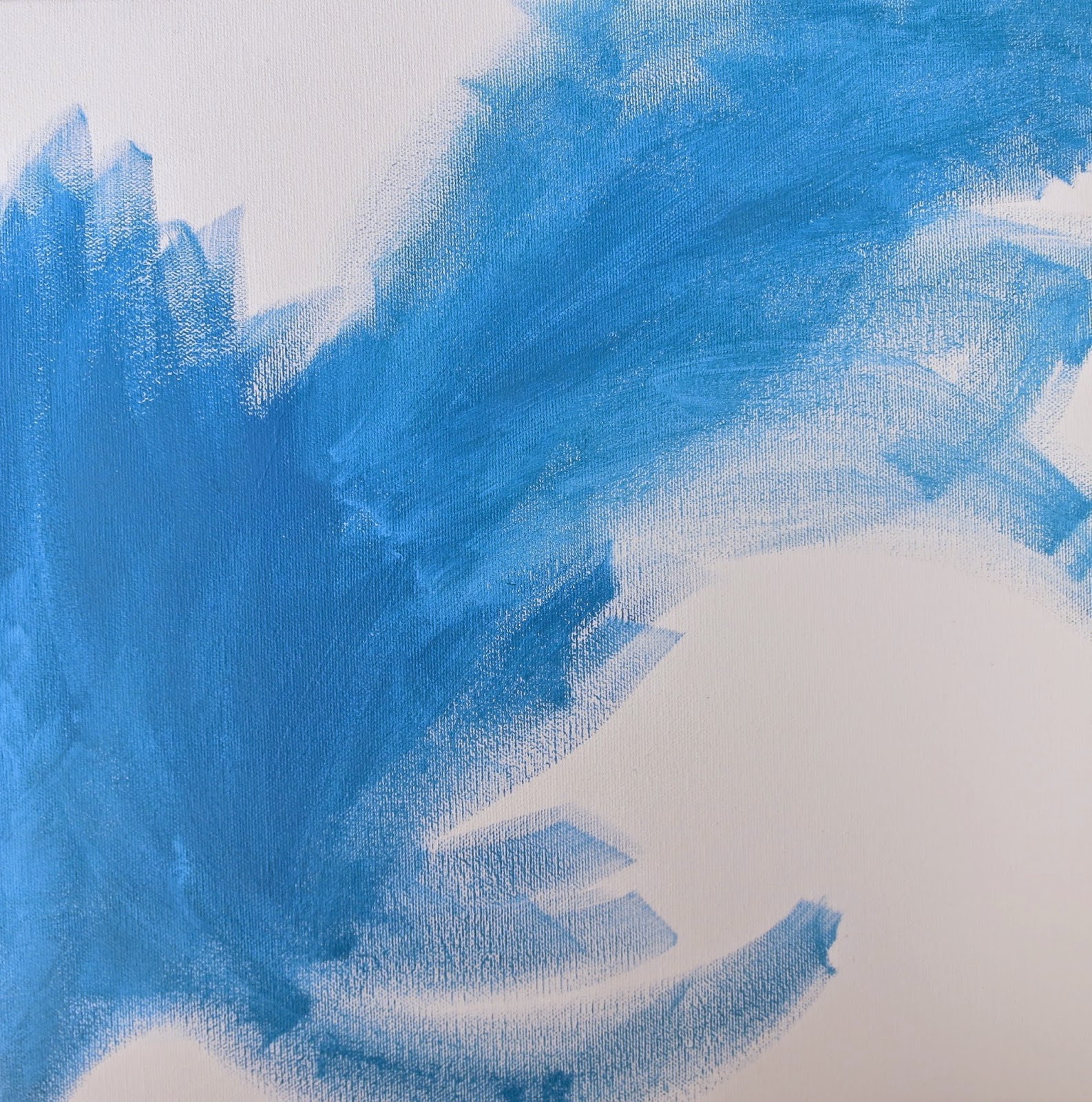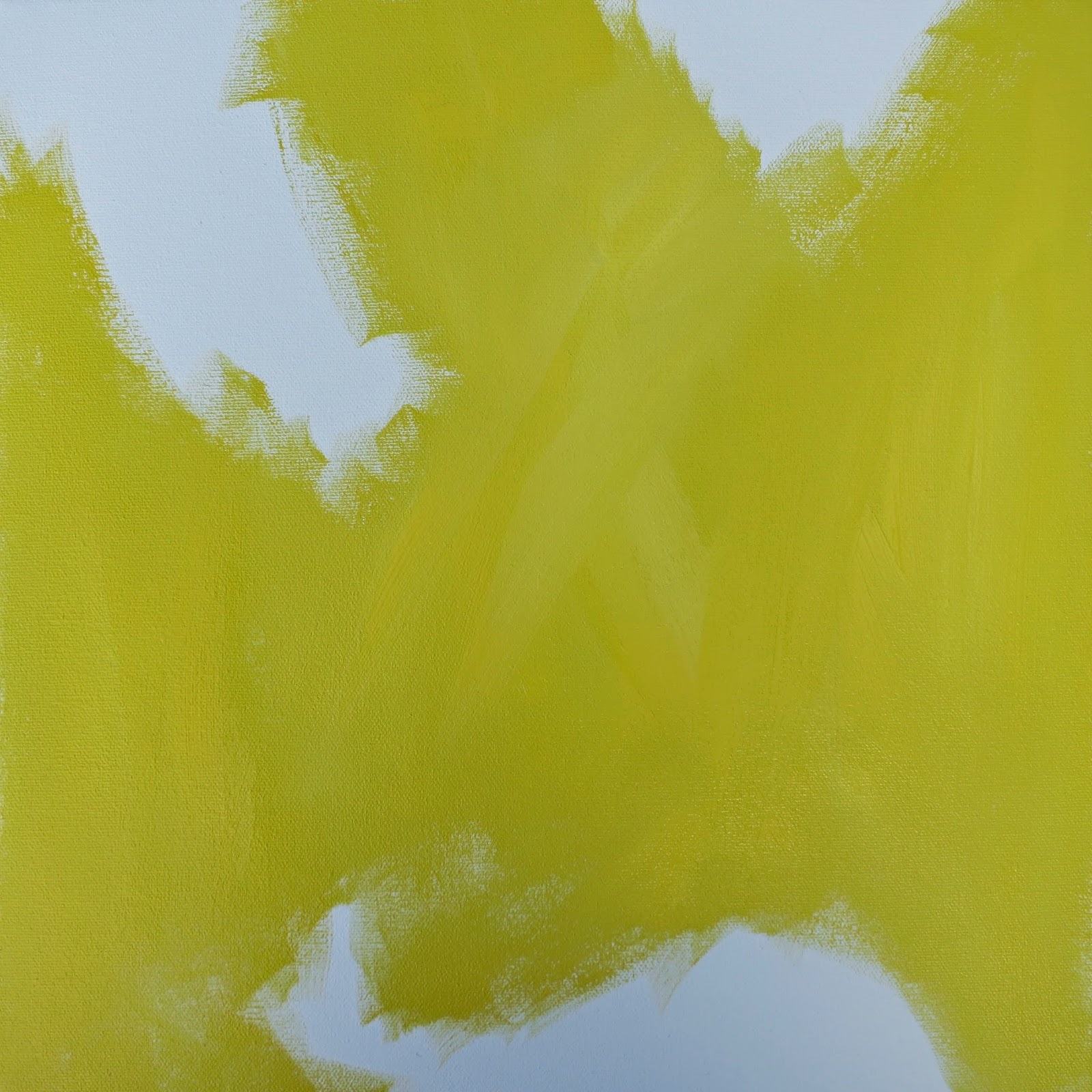The invitation to make something visual to be part of a performance of Schumann's Scenes From Childhood was open-ended. I immediately ruled out performance painting: 1) it is too distracting and 2) I would not have a single emotive artist response on a stage being watched. Actually, I didn't really need reasons because nobody wanted that anyway. All the same, what to do?
What I like to do is paint. Even if there were other elements involved, I decided that I would make paintings.
Then I had to decide if there would be one big painting, paintings that connected to make a whole (more difficult working with 13) or individual paintings. I batted this around for a bit. I liked the idea of big; lots of space to make marks, maybe even get some kids involved, but I couldn't get that idea to land. Big is hard to handle and hard to move, and the content did not gel. I kept coming back to 13 paintings, not too big or too small, on canvas or board.
Not all the piano pieces are the same length and I debated if the size of painting should reflect that. I made an arbitrary choice that they would all be the same size: dimensions some number of inches in the teens.
Square or rectangle? If rectangle, landscape or portrait? I went with personal preference. I like squares. I settled on 14" x 14" canvases. The dimensions are close to the size of paper we give kids to draw and paint on. And canvas instead of board because it is lighter and there are different framing options, including not framing at all.
The piano pieces have different themes, tones and spirit and I debated if the paintings should be visually unrelated. I decided that I wanted an over-arching tone -- the mists of childhood -- with related but varying content. I wanted colourful child-like marks. I have watched enough children paint to kind of know how that goes.
I wanted elements of collage involving paper and objects. This helped me commit to using acrylics, not my go-to medium. The drying speed, in this case a bonus, usually makes me crazy.
The decisions, to recap, are that I would make 13 paintings, on 14" x 14" canvases, using acrylic and collage, with a visual tone in common and varying elements.
I give you stage one. They are in order, 1-13. Colours were inspired by the themes of the piano pieces:
Thursday, 30 October 2014
Wednesday, 29 October 2014
Tuesday, 28 October 2014
Titles
Schumann's wrote 13 Scenes From Childhood. The titles of the pieces are also the titles of the 5 Lines and The Scenes. In the next few posts I will refer to the pieces by number. Here, for reference, are the titles:
1. About Strange Lands and People
Von fremden Ländern and Menschen
2. Curious Story
Kuriose Geschichte
3. Blindman's Bluff
Hasche-Mann
4. Pleading Child
Bittendes Kind
5. Perfectly Contented
Glückes genug
6. Important Event
Wichtige Begebenheit
7. Reverie
Träumerei
8. At the Fireside
Am Kamin
9. The Knight of the Rocking-horse
Ritter vom Steckenpferd
10. Almost Too Serious
Fast zu ernst
11. Frightening
Fürchtenmachen
12. Child Falling Asleep
Kind im Einschlummern
13. The Poet Speaks
Der Dichter spricht
1. About Strange Lands and People
Von fremden Ländern and Menschen
2. Curious Story
Kuriose Geschichte
3. Blindman's Bluff
Hasche-Mann
4. Pleading Child
Bittendes Kind
5. Perfectly Contented
Glückes genug
6. Important Event
Wichtige Begebenheit
7. Reverie
Träumerei
8. At the Fireside
Am Kamin
9. The Knight of the Rocking-horse
Ritter vom Steckenpferd
10. Almost Too Serious
Fast zu ernst
11. Frightening
Fürchtenmachen
12. Child Falling Asleep
Kind im Einschlummern
13. The Poet Speaks
Der Dichter spricht
Saturday, 25 October 2014
Artist Statement - Scenes From Childhood: Schumann in Line and Colour
I have long wondered about simultaneous attention to more than one sensory experience and how successfully we can absorb two things at once, most particularly visual art and music. I attended a concert in a very ornate church setting with abstract visuals being performed along with the music and found that I could hardly hear for seeing. I have also attended many music performances in a visually unobtrusive setting and my imagination fills the space I am seeing while I listen. When invited to do some kind of visual work to be presented with a piano and literary performance, I was delighted to play with this idea of attention as well as interpreting the pieces.
The Five Lines starting point is the staff; the lines that are home to the notes and determine their identity. Unlike music notation, these lines bend, loop, and cross to become somewhat representative of the themes of each piano piece. They were initially intended to be part of the paintings, but my ideas took a turn and they remained independent pieces.
The Scenes paintings are layered colour, figures, and objects partially obscured by the mists of memory and shadows. In A World Elsewhere Wayne Johnston writes about early childhood memory this way:
Landish told him that you passed from the Womb of Time into what he
called your birth "Murk", which was the interval between your "commencement
screech" and the first moment of your life that you remembered. No two Murks
were of the same duration.
The figures in these paintings are not all pre-memory age, but adults have a difficult time pinning down aspects of their childhoods (not to mention what happened last month). The figures are placed in a world of colour, randomly applied. Objects - collections - appear, as do shadows; there is a little darkness in everyone's childhood. And there are obscuring layers of white, erasing some details and fogging others.
The paintings might be described as quiet. That will be perfect if they help the viewers hear.
Concert info here.
The Five Lines starting point is the staff; the lines that are home to the notes and determine their identity. Unlike music notation, these lines bend, loop, and cross to become somewhat representative of the themes of each piano piece. They were initially intended to be part of the paintings, but my ideas took a turn and they remained independent pieces.
The Scenes paintings are layered colour, figures, and objects partially obscured by the mists of memory and shadows. In A World Elsewhere Wayne Johnston writes about early childhood memory this way:
Landish told him that you passed from the Womb of Time into what he
called your birth "Murk", which was the interval between your "commencement
screech" and the first moment of your life that you remembered. No two Murks
were of the same duration.
The figures in these paintings are not all pre-memory age, but adults have a difficult time pinning down aspects of their childhoods (not to mention what happened last month). The figures are placed in a world of colour, randomly applied. Objects - collections - appear, as do shadows; there is a little darkness in everyone's childhood. And there are obscuring layers of white, erasing some details and fogging others.
The paintings might be described as quiet. That will be perfect if they help the viewers hear.
Concert info here.
Thursday, 16 October 2014
Monday, 13 October 2014
Monday, 6 October 2014
Subscribe to:
Comments (Atom)





























